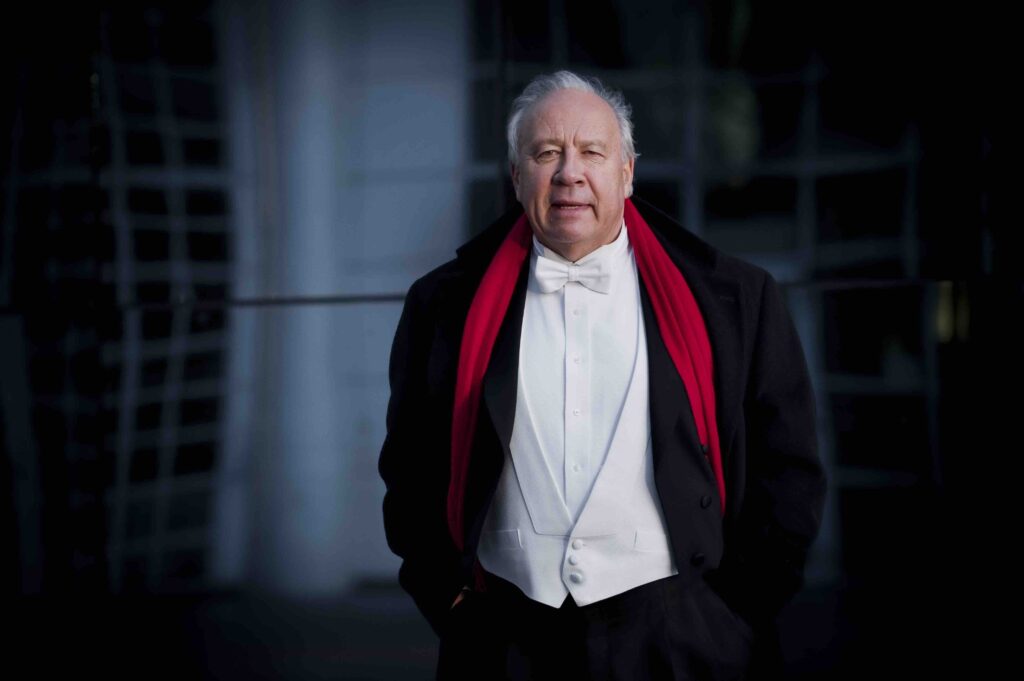
Neeme Järvi is the President of the Jury of the 5th Evgeny Svetlanov International Conductors Competition 2022. A student of another great conductor of the 20th century, Evgeny Mravinsky, and the great pedagogue Nikolay Rabinovich, the Estonian conductor has marked the history of orchestra conducting.
His career has received outstanding international momentum after winning the First Prize in 1971 at the International Conducting Competition of the National Academy Santa Cecilia in Rome. Then he headed the Estonian Radio and Television Symphony Orchestra, the Estonian National Opera, the Gothenburg Symphony Orchestra, the Royal Scottish National Orchestra, the Detroit Symphony Orchestra, the Estonian National Symphony Orchestra, the Orchestre de la Suisse Romande and the Hague Residentie Orkest.
Neeme Järvi is one of the first internationally renowned conductors who has not limited himself to a particular repertoire yet he added something unique to everything he conducted. He is equally convincing with Brahms as he is with Tchaikovsky (he’s recorded the complete symphonies of both). On top of that, it is something of a passion with Järvi to give lesser-known European composers the exposure they deserve, but didn’t have, in previous generations.
Composers such as Kurt Atterberg, John Svendsen, Estonian composers Arvo Pärt and Eduard Tubin, Wilhelm Stenhammar and Alfred Schnittke represent only a small part of the list of composers that Neemé Järvi has not only brought to the public attention, but committed to record – thus preserving their music for future generations. Despite his mastery of twentieth-century music, much of his interest outside of the great composers focuses on the lesser-known composers of the late Romantic period, composers who were contemporaries of Scriabin, Dvorak and Bruckner. Beyond that, he is keen to interpret and record lesser-known works by extremely famous composers. The magnificent Third Symphony by Aram Khatchatourian and Wagner’s two symphonies are just two examples of neglected pieces from the otherwise well-known repertoire that Neeme Järvi recorded.
His rehearsal methods also seem resolutely modern. Unfortunately, the days of long and rigorous rehearsals, for which Mengelberg and Karajan were famous, became a rarity as a fierce business ethic prevailed in classical music. But this evolution has not harmed this maestro, whose method of repetition is more exhaustive than that of many conductors of the past.
The sound of Neeme Järvi is based on a balance between fluidity of intonation and timbre with tempi that flow easily while remaining globally faithful to the score. “Basically I look at phrasings — how to build up the music in every moment and not to learn the particular instrumentation, because that I know. The basic thing in my music is how to make the shape in the music.” – admitted Neeme Järvi in an interview with Bruce Diffie (Chicago).
For him, the conductor must contribute a lot to make his performance a spectacle and take pleasure in this spectacle. Thus, the conductor may or may not like the work, but the phrasing is the music and the role of the conductor is to explain what the phrasing says.
Another point that Maestro considers very important, especially for young conductors, is that they must absolutely have a gestural technique. “If you don’t have this technique, you can’t explain music and you don’t make music. You may be a very talented person, but there’s nothing you can do. You have to learn the technique. Technique is the first thing in music for everyone – for a violinist, for an instrumentalist, for a conductor.” (Neeme Järvi)
Mastery of technique gives conductors the freedom and flexibility to explain the meaning they put into music. Being a conductor sounds simple, but in reality it requires a very complex mixture of technique, charisma and instinct.
Sources : France Musique, Interviews à Gramophone, à Bruce Diffie (Chicago), Classiquemaispashasbeen, Diapason, Meta Artists.
